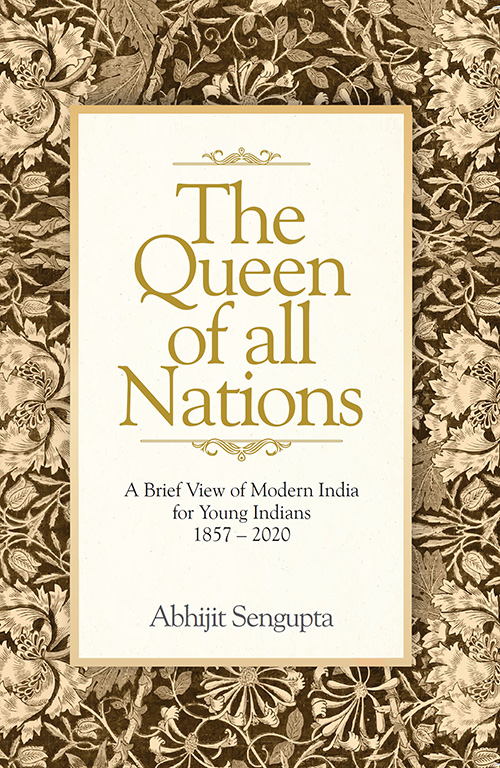About 814 million voters in the world's largest democracy will elect a new government amid India's economy slowing down considerably. The outcome of the parliamentary elections will be known on May 16 and there is every likelihood that the coming summer will be long and hot for the people, in more than just a metaphorical sense.
One of the biggest concerns of the electorate is high food prices. For the first time in the history of India, inflation has stubbornly refused to slow down despite having risen by double digits for the better part of the last six years. Persistently rising food prices has hit the poor who account for at least a fourth of the country's population of over 1.2 billion.
In the process, inequalities have widened in an already highly-unequal society, exacerbating social tensions and adding to the anger and outrage of ordinary citizens, especially against ineffective governance and brazen acts of corruption.
Last decade, India’s gross domestic product (GDP) had grown by more than nine percent three years in succession between 2005-06 and 2008-09. Thereafter, in 2010-11, the rate of growth again grew by over nine per cent. Over the last two years, however, the economy has grown by less than five percent.
In the recent past, particular sectors have grown rapidly but declined or stagnated subsequently. For instance, the mining sector grew by 8.2 percent in 2004-05 and by 7.5 percent in 2006-07, but declined or stagnated over the last three financial years particularly in the wake of allegations of corruption in allocation of mines such as iron ore and coal.
As far as manufacturing industry is concerned, consistently high rates of growth between 2004-05 and 2010-11 have been followed by a sharp deceleration, stagnation and decline in factory output. A number of industries, including automobiles, are facing demand constraints. Construction, which has been one of the fastest growing sectors in the Indian economy, has of late also lost momentum.
Agricultural imbalance
One of the most glaring structural imbalances in the Indian economy relates to agriculture, a sector on which at least half the population depends directly for their livelihood but it accounts for barely 18 percent of GDP. Unlike most other countries where a reduction in the share of agriculture in GDP has been accompanied by fall in the share of this sector in employment, this has not been the case in India.
Whereas the incumbent United Progressive Alliance government (led by the centre-left Congress party) has over the last decade apportioned higher public investments in agriculture compared to its predecessor regime (the National Democratic Alliance government led by the right-wing, Hindu nationalist Bharatiya Janata Party which was in power between 1998 and 2004), farming remains one of the most risky professions.
More than 138,000 farmers committed suicide between 1995 and 2003, or an annual average of 15,369, according to the government. These figures rose to over 1,46,000 in the six years between 2004 and 2012 implying a higher annual average of 16,264.
Although the government purchases wheat and rice at statutory minimum prices and prices of cereals have been relatively stable, prices of high-protein foods have sharply increased due to imbalances in supply and demand. Such food items include a range of vegetables, fruits, milk and dairy products, poultry, fish and meat.
Finance Minister Palaniappan Chidambaram reluctantly conceded on December 24, 2013 that "there was no easy solution to taming food inflation".
Sluggish employment
Despite contentions that economic growth in India has been "inclusive", expansion of employment opportunities remains sluggish.
Official spokespersons keep talking about how the government's welfare schemes - including a nationwide rural employment guarantee programme, the farm loan waiver and the food security programme - have put more money in the hands of the poor, particularly those who live in rural areas.
Yet, what is also true is that food inflation and corruption has eroded a substantial part of the gains that have thus accrued to the underprivileged.
Data put out by the National Sample Survey Organisation indicate that the annual rate of growth of employment between 1999-2000 and 2011-12 was just 2.2 percent per year, despite the decade witnessing "impressive" and "unprecedented" economic growth.
A December 2012 paper prepared by the Institute of Applied Manpower Research, a government funded body, observed: "One of the most disturbing numbers that the 2009-10 employment-unemployment National Sample Survey data show is the addition of merely 2.76 million work opportunities during the period of fastest growth for the economy... Compared to this, there was an addition of 60 million to the workforce during 1999-2000 and 2004-05."
Besides taming prices and creating employment, Mr Chidambaram has acknowledged that two of his big "disappointments" - some would prefer to describe these as "failures" - has been his inability to arrive at a consensus with states on a minimum goods and services tax and to move ahead with a Direct Taxes Code.
His critics contend that if he had paid more attention to these economic "reforms", instead of the kind preferred by Prime Minister Manmohan Singh and him, notably, rolling out the red carpet for foreign investors, the economy would not have been in the shape it is in at present.
Savings and investments
A major problem facing India's financial sector is the rising non-performing assets (a euphemism for loans not returned) of public sector banks. While investment and savings rates remain at a healthy one-third of GDP, there are indications that citizens are saving less because of inflation. Also, for the first time in India's history, over the last two years, its own entrepreneurs have invested more outside the country than inward flows of foreign direct investments.
The next government will have a daunting task ahead of it to revive the economy
Although share prices have perked up over the past few weeks, stock-market indices have been volatile over the last decade. The rise or fall of these indices have depended on the purchase and sale decisions of foreign institutional investors with many domestic investors having left the bourses.
The Ministry of Finance and the country's central bank, the Reserve Bank of India - the apex monetary authority - have periodically been at loggerheads over the desirability or otherwise of lowering interest rates.
In the middle of last year, India's burgeoning trade deficit and current account imbalance had resulted in the value of the rupee sharply depreciating against the US dollar. After the RBI and the government imposed curbs on imports of gold, these external deficits have been controlled and the value of the Indian currency has stabilised.
Those belonging to the country's industrial elite, who have been the biggest beneficiaries of the policies of economic liberalisation followed by successive governments over the last two decades, are, ironically, today complaining about "policy paralysis". Many corporate captains are rooting for Gujarat Chief Minister Narendra Modi, the opposition BJP's prime ministerial candidate.
The finance minister may be right when he says the country's economy has the potential to grow by eight to nine percent each year for the next few decades. But public memory is short. And the slowdown of the last few years will not be forgotten in a hurry. The next government will have a daunting task ahead of it to revive the economy.


